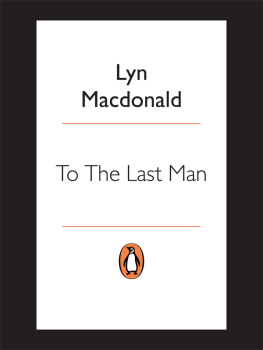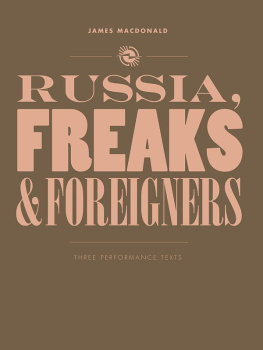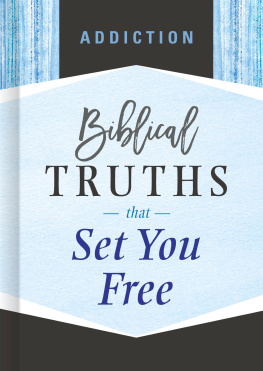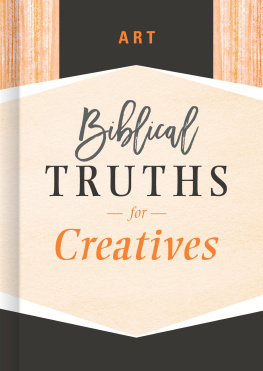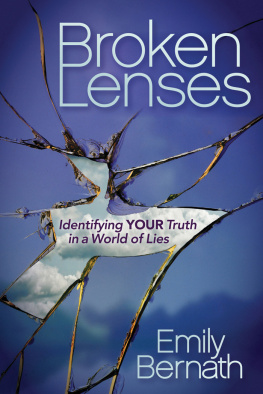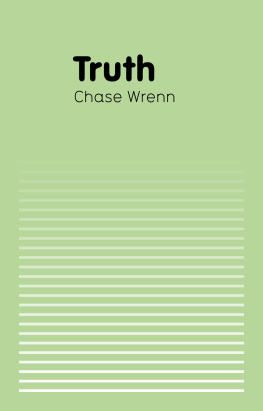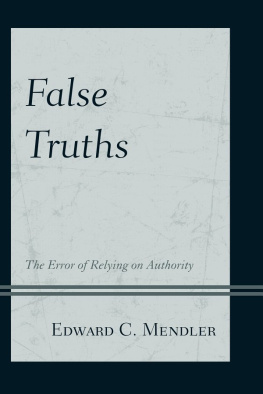Cover copyright 2018 by Hachette Book Group, Inc.
Hachette Book Group supports the right to free expression and the value of copyright. The purpose of copyright is to encourage writers and artists to produce the creative works that enrich our culture.
The scanning, uploading, and distribution of this book without permission is a theft of the authors intellectual property. If you would like permission to use material from the book (other than for review purposes), please contact permissions@hbgusa.com. Thank you for your support of the authors rights.
Published simultaneously in Great Britain by Bantam Press, an imprint of Transworld Publishers
Little, Brown and Company is a division of Hachette Book Group, Inc. The Little, Brown name and logo are trademarks of Hachette Book Group, Inc.
The publisher is not responsible for websites (or their content) that are not owned by the publisher.
The Hachette Speakers Bureau provides a wide range of authors for speaking events. To find out more, go to hachettespeakersbureau.com or call (866) 376-6591.
This book looks forward to a backlash.
Written during an epidemic of fake news and alternative facts, it anticipates a revival of public concern for the truth and a widespread insistence that politicians, business leaders, campaigners and other professional communicators be held accountable for the veracity of their words. I have confidence that we value truth enough to fight for it.
But truth is not as straightforward as it seems. There are different ways to speak truth, not all of them honest. On most issues, there are multiple truths we can choose to communicate. Our choice of truth will influence how those around us perceive an issue and react to it. We can select truths that engage people and inspire action, or we can deploy truths that deliberately mislead. Truth comes in many forms, and experienced communicators can exploit its variability to shape our impression of reality.
This is a book about truth, not lies, although much of it is concerned with how truth can be used just like lies. The same instincts, pressures and incentives that lead communicators to say things that arent true also lead them to use truth in a highly misleading way. By showing how it is done, I hope to encourage more people to spot and call out misleading truths.
Different forms of truth can be used in a more constructive way, to unite, inspire and transform. Selecting the right truth can bring a company together, give courage to an army, speed the development of a new technology, rally supporters to a political party and galvanize the energy, creativity and enthusiasm of whole organizations. Leaders need to understand their communications options and know how to pick and present the most engaging truths.
This book is for anyone who wants to communicate truthfully but understands that they have a choice of truths to use. Its for anyone tired of being led up the garden path by politicians, marketers and PR officers using technically truthful constructions. Which truth will be most effective in making your point? Which truth will inspire your organization? Which truth is the most ethical? What truths might others use to persuade us to act against our own interests? How can we challenge misleading truths? Truth should help answer these questions.
A book about truth is an easy target for accusations of inaccuracy or falsehood. In the many stories and topics covered, I have tried hard to get the facts right, but inevitably there will be errors. I welcome corrections from sharp-eyed readers or from all those who know more than I do about the issues discussed. Your feedback now will save my blushes in later editions. I would also like to hear about interesting, sly, outrageous and transformative truths youve encountered in the news, in your organization or in life. Please send me your corrections and suggestions via https://hectormacdonald.com/truth.
London, October 2017
There is no worse lie than a truth misunderstood by those who hear it.
W ILLIAM J AMES , The Value of Saintliness
The Andean dilemma
For vegetarians and coeliacs, the discovery of quinoa was a kind of miracle. Here was a gluten-free seed, rich in magnesium and iron, that contained more protein than any grain, including all the essential amino acids our bodies they deemed it sacred and named it the mother of all grains; their emperor would sow the first seeds of the season with tools made of gold. The so-called superfood was even celebrated by the United Nations, which declared 2013 the International Year of Quinoa.
But quinoa fans were in for a disturbing revelation. Between
The story echoed around the world, causing healthy eaters a crisis of conscience. The more you love quinoa, the more you hurt Peruvians and Bolivians, claimed a headline in Canadas Globe and Mail. stop eating quinoa, declared one woman:
Its a matter of principle the people for which quinoa has been a dietary staple for untold generations can no longer afford to eat it because people like me have created such a demand for its export and driven the price up We will survive without it. I will survive without it.
The idea that high quinoa prices, inflated by global demand, had disadvantaged local people in Bolivia and Peru was credible and widely accepted. But it didnt seem right to economists Marc Bellemare, Seth Gitter and Johanna Fajardo-Gonzalez. After all, a lot of foreign money was now pouring into Bolivia and Peru thanks to the quinoa trade, much of it ending up in some of the poorest parts of South America. Not many other crops grow well 14,000 feet above sea level, so surely the quinoa boom was a blessing for the region?
The economists tracked down Peruvian survey data on household expenditure and split the households into those that grow and eat quinoa, those that eat it but dont grow it, and those that never touch the stuff. They found that between 2004 and 2013 the living standards of all three groups had risen, although the quinoa farmers had enjoyed the fastest
But what about that 34 per cent drop in consumption? It turns out quinoa consumption in both countries dropped slowly and steadily over a longer period than the price hike, suggesting the two trends are not significantly connected. A much more likely explanation
I went to see quinoa growing in the Colca Valley, an area of Peru that has been farmed since pre-Inca times. It is a beautiful cereal-like crop, with large seed heads of a deep red or rich golden colour. In this part of the Andes, quinoa is grown in terraced fields alongside unusual local varieties of corn and potatoes. The foreign demand is one hundred per cent a good thing, declared my Peruvian guide, Jessica. The farmers are very happy, and anyone who wants quinoa can still afford it. Theres been a further benefit, she explained: previously, metropolitan Peruvians had tended to regard people from her region as peasants for eating quinoa; but now that Americans and Europeans crave it, quinoa is considered fashionable. In Lima, finally, they have respect for the people of the Altiplano and our heritage.
In a remote and inhospitable area of southwest Bolivia dominated by salt flats and dormant volcanos, I was shown much-needed local development and tourism projects that had been funded by quinoa money. Subsistence farmers, who for generations had struggled to feed their families, could now start to invest in a more ambitious future. According to





